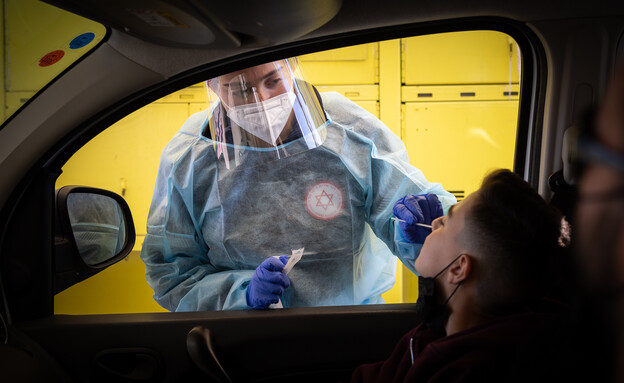How does the omicron affect the body?
The omicron prefers to settle in the mucosa of the upper airways and has no tendency to descend to the level of the bronchi and lungs. This on the one hand contributes greatly to its adhesion ability and obtaining adhesion coefficients of about 2 to 3. On the other hand this fact contributes to a dramatic reduction in pulmonary involvement, which has led to a reduction in exacerbation i.e. need for hospitalization in general, intensive care, and need for artificial respiration or acupressure.
What are the main symptoms of omicron?
Typical manifestations of omicron strain include sore throat, runny nose, cough, headache and weakness. Fever can also appear in some cases. These manifestations that are similar to cold or flu viruses are very challenging because in parallel with the omicron wave there are many cases of these viruses and therefore the suspicion rightly falls on the corona, which leads to isolation and immediate dispatch for a tester test for verification.
How are the symptoms of omicron different from previous strains?
It is interesting to note that the complaints typical of previous strains of loss of sense of taste and smell do not characterize the omicron strain. Another characteristic is that the average time from contact with verified to the onset of symptoms (known as incubation time) is shorter in the omicron strain than previous strains, about three days compared to about a week.
What is the drug treatment offered to those infected with Omicron?
In adults with risk factors we can offer drug treatment in the first days of symptom development, in order to prevent clinical deterioration and hospitalizations. These preparations are not given to children and therefore we only offer them supportive care.
What are the consequences and risks for children infected with Omicron?
As pediatricians we are not only concerned with coronary heart disease during the disease itself but with the consequences that follow. In the previous varieties, 2 types of complications stood out. The first is the multisystem inflammatory response syndrome (called PIMS or MIS-c) Where a child recovering from corona suddenly develops a collection of symptoms due to uncontrolled activation of the immune system, which requires supervision and treatments in the pediatric intensive care unit. The condition is life threatening and there have been deaths.
The second is the long cube, the consequences and remnants of complications that remain long-term and often appear long after the initial recovery. It is a wide range of complications such as shortness of breath, chronic fatigue or weakness, sleep disorders, concentration disorders, memory and learning, chronic skeletal pain, eating disorders and more. The impression based on the relatively fresh information is optimistic, at least in the context of the rate of complications that appear near recovery, but as clinicians we will continue to monitor the many recoverers.
In conclusion, the impression is that it is a less violent strain than previous strains, but since a low percentage among a large population in a short time poses a considerable medical challenge, the best way now to be prepared for the disease is to get vaccinated as recommended in the age group against corona. It is also important to get vaccinated against the flu and to wear a mask.
